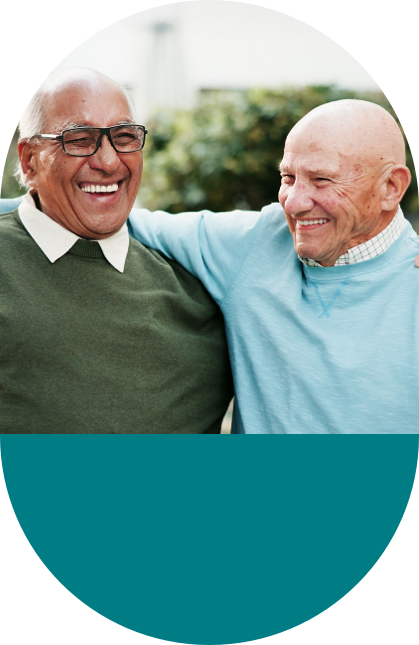Staying active is one of the most effective ways for older adults to manage osteoporosis and support their lifelong mobility. The right exercises help strengthen bones, improve balance, and maintain independence, while also boosting confidence and overall well-being.
7 great osteoporosis exercises for seniors include:
- Weight-bearing activities
- Low-impact aerobics
- Strength training with light weights
- Yoga and Pilates for flexibility and mobility
- Tai chi for balance and coordination
- Posture exercises for spine health
- Resistance band workouts
Each one offers unique benefits and can be adapted to suit your comfort level and abilities. Let’s explore how movement can support stronger, healthier living.
Understanding Osteoporosis
Osteoporosis causes bones to become weaker and more likely to break. It’s especially common in older adults and often isn’t detected until a fracture happens. The most vulnerable areas include the hips, wrists, and spine, which can seriously impact mobility and independence over time.
The bright side is that movement can go a long way in helping to support stronger bones.
Exercises for Seniors with Osteoporosis
7 great options to incorporate into your exercise routine include:
- Weight-Bearing Exercises
Weight-bearing exercises, such as walking, are excellent for building and maintaining bone density. These activities force your bones to support your body weight and can stimulate bone growth. Walking is simple yet powerful. Explore your neighborhood or join a walking group for an added social bonus.
- Low-Impact Aerobics
Low-impact aerobic exercises, such as elliptical training, provide a safe and effective way to support bone strength without placing added stress on your joints. They’re a great option for staying active.
These types of exercise are ideal for older adults who want to add variety to their routine while protecting their joints. In addition to the bone health benefits, you’ll also give your cardiovascular system a workout, which is equally important.
- Strength Training with Light Weights
Strength training is essential for improving bone strength and muscle mass. By using light weights, you can safely build strength without overloading potentially fragile bones. Always focus on proper form to avoid unnecessary stress on your joints or bones. Consider getting the help of a personal trainer who specializes in fitness for older adults
- Yoga & Pilates for Flexibility & Balance
Yoga and Pilates are gentle forms of exercise that improve flexibility, strengthen core muscles, and enhance posture—all crucial in managing osteoporosis. These practices can also promote relaxation, making them great for mental health.
- Tai Chi for Balance & Coordination
Tai chi is a slow, flowing exercise focusing on balance, coordination, and mindfulness. It’s been proven to reduce fall risk among older adults. This meditative practice offers physical and mental benefits, making it a holistic activity.
- Posture Exercises for Spine Health
Maintaining good posture is crucial for supporting your spine and reducing the risk of fractures. Simple posture exercises can significantly affect your spinal alignment and overall strength. Posture exercises are essential for countering the rounded shoulders that can develop with osteoporosis.
- Exercises Using Resistance Bands
Resistance bands are versatile tools that help build muscle strength without putting too much pressure on your joints. Resistance band exercises are portable and can be done anywhere, making them a convenient way to stay active.
How Exercise Supports Bone Health
For those living with osteoporosis, exercise goes beyond staying fit—it’s a key part of staying strong, steady, and independent each day. Here’s how the right exercises can help you manage this condition effectively:
- Strengthen bones and muscles: Weight-bearing and resistance exercises promote bone density and muscle strength.
- Improve balance and coordination: Activities like tai chi enhance stability, reducing the risk of falls.
- Boost posture and flexibility: Regular stretching and posture exercises help maintain spine health and mobility.
Exercise Tips to Protect Your Bones
Exercise is a powerful tool for managing osteoporosis, but it’s important to move safely to avoid injury and protect your bones. Here are some tips to keep in mind:
- Consult your doctor: Always check with your healthcare provider before starting a new exercise routine.
- Start slowly: Gradually increase the intensity and duration of your exercises to avoid overexertion.
- Focus on proper form: Incorrect form can cause unnecessary strain on your joints and bones.
- Avoid high-impact movements: Steer clear of activities like running or jumping, which can increase the risk of fractures.
- Listen to your body: If you experience pain or discomfort, stop the activity immediately and consult a professional.
Supporting Strength Through Community
Managing osteoporosis doesn’t mean you have to slow down. With the right approach to movement, you can build strength, improve balance, and stay active well into your golden years. These seven exercises are a great place to start—and they can easily be adapted to fit your pace and preferences.
At Juniper Village at Hamilton, we’re here to support your wellness journey every step of the way. From personalized fitness programs to a community that encourages independence, we make healthy living a daily priority. Contact us today to learn more about how we help residents stay strong, confident, and connected through movement.







